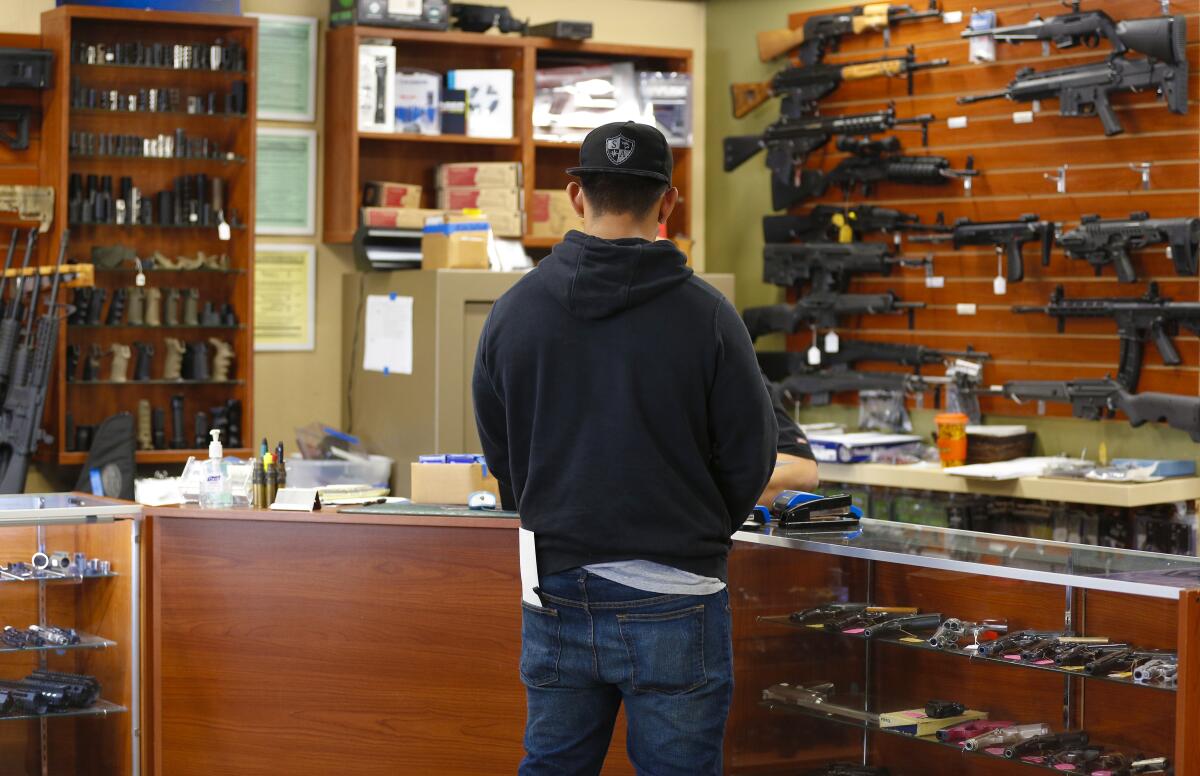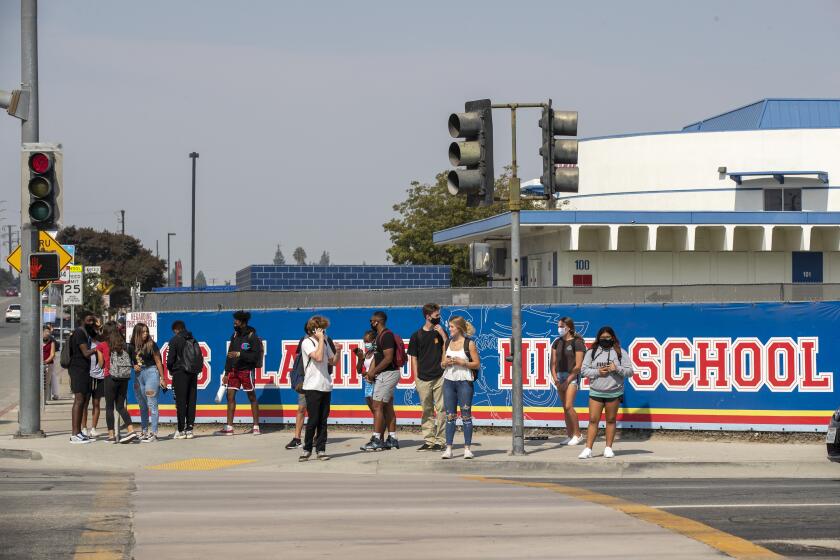Increase in gun violence in the U.S. calls to mind a work of science fiction

- Share via
When I was a teenager I read a lot of science fiction. One book that made a particular impression was “The Naked Sun,” written in the 1950s by Isaac Asimov.
It’s a murder mystery set in the future on a planet where humans have little physical contact, relying instead on robots and other technology to interact with one another.
I’ve thought about this book occasionally during the past year-plus, marveling at the real-life parallels as we have experienced physical distancing, more limited in-person contact and an intensifying reliance on technology. I mused about how science fiction writers have sometimes shown themselves to be more prophetic than even they might have imagined.
But now my thoughts return to this story for another reason. I must warn readers that a major spoiler lies ahead, in case anyone is considering checking out this 60-plus-year-old book for the first time.
The fictional detective who solves the case figures out that the killing occurred as a result of a roboticist manipulating a robot to hand a weapon to the victim’s wife during a heated argument, when the woman was at the height of her emotional distress.
I can’t speak to what the author intended us to glean from this plot twist, but I consider his insight into human behavior relevant to our modern debate over gun violence.
Few among us would disagree that we must work to reduce the number of shooting deaths, which occur across the nation with alarming regularity. In California in the past few weeks alone we’ve had more horrific examples, including what authorities characterize as a road rage incident on the 55 Freeway in Orange that resulted in the death of a 6-year-old boy, and a mass shooting at a light-rail yard in San Jose.
The latter occurred not far from the quiet neighborhood where my son lives. These days, we grimly acknowledge every time the unthinkable happens, it appears that nowhere is safe.
But why do I refer to Asimov’s book?
It’s because we as a society resemble the fictional roboticist. We readily hand over deadly weapons, even weapons of war, to pretty much anyone who wants them.
Then we wring our hands and offer condolences every time angry, unstable people use those weapons to commit atrocities. Afterwards, most of the time, not much changes.
The statistics paint a bleak picture.
Last year, gun violence killed nearly 20,000 Americans, more than any other year in at least two decades, according to the Gun Violence Archive. Nearly 300 of the victims were children. Another 24,000 people in the U.S. used guns to commit suicide.
The vast majority of these deaths were not in mass shootings and didn’t make front page news, yet they are all equally tragic.
It’s not as if we don’t have any answers. We know that we need a comprehensive, multifaceted effort. It should be grounded in the acknowledgment that gun violence is a public health crisis, best addressed by the fostering of strong, healthy communities; more research; and robust violence intervention programs and mental-health initiatives.
But it can’t stop there.
A vocal contingent of the public against anti-bias education has created a debate that has little to do with the state’s voluntary curriculum.
A Scientific American analysis of dozens of studies found that, counter to what gun-rights advocates believe, gun ownership does not deter crime. It also reported that homeowners with access to guns were more likely to be murdered. Other research has found that the presence of guns increases the likelihood of death in cases of domestic abuse and suicide attempts.
Such findings haven’t resulted in moderating gun ownership. Indeed, record gun sales have been reported in the United States during the pandemic.
More common-sense firearm regulations must be part of the solution, including universal background checks and increased restrictions on the sale and use of large-capacity magazines and firearms — the kind of modest measures that are continually blocked by the gun lobby despite being supported by a majority of Americans.
Yet for what seems like an eternity we have remained stuck in our sad and infuriating loop of outrage followed by little to no action. Even the legal tools we do have, like California’s “red flag” law that can alert law enforcement to potential threats, are only used haphazardly.
And in a development condemned by gun control advocates, earlier this month California’s 30-year-old ban on assault weapons — one of seven such statewide bans — was put in jeopardy when a federal judge declared it unconstitutional. He gave the state 30 days to appeal.
The overarching obstacle to substantive change lies embedded in our culture. The American identity itself is wrapped up in our love affair — some would call it an obsession — with guns. Many of us — perhaps a minority but a powerful one — view gun ownership as a sacred right, enshrined in the Constitution, fundamental to our national identity and therefore not to be questioned or limited in any way.
While I hate to be pessimistic, I fear that this aspect to our national psyche may never be dislodged, not enough to stanch the epidemic of gun violence at any rate.
So let’s at least be honest about the terrible price we pay for clinging so rigidly to an idealized image of guns that is far from the reality of the brutal world we have created.
All the latest on Orange County from Orange County.
Get our free TimesOC newsletter.
You may occasionally receive promotional content from the Daily Pilot.





